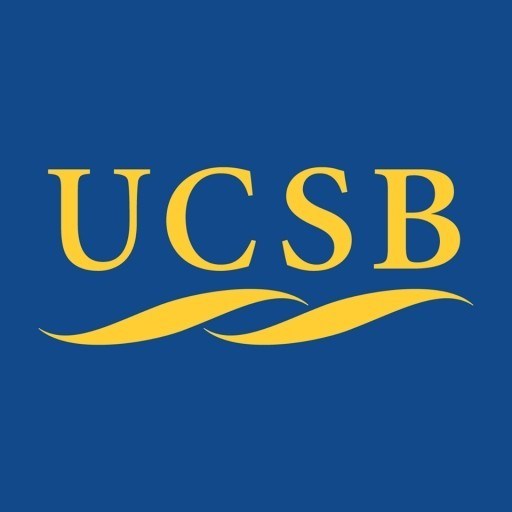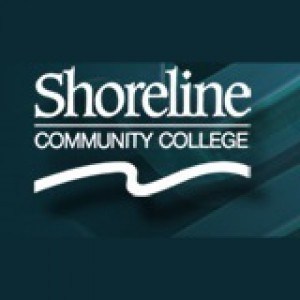Photos of university / #ucsantabarbara
The University of California offers a comprehensive Physics undergraduate program designed to provide students with a strong foundation in both theoretical and experimental physics. This program aims to cultivate a deep understanding of the fundamental principles governing the universe while developing critical analytical and problem-solving skills essential for scientific research and technological advancement. Students will engage with a diverse curriculum that includes classical mechanics, electromagnetism, thermodynamics, quantum mechanics, and statistical physics, complemented by advanced coursework in condensed matter physics, astrophysics, and particle physics. The program emphasizes hands-on laboratory experience, encouraging students to apply theoretical knowledge through experimental investigations, data analysis, and use of state-of-the-art equipment. In addition, students have opportunities to participate in research projects under faculty supervision, fostering scientific inquiry and original investigation. The program also offers various seminars, workshops, and collaborative projects to enhance learning and professional development. Graduates of the Physics program are well-prepared for a range of careers in academia, industry, data science, engineering, and research institutions. They also receive a solid foundation for pursuing graduate studies in physics or related disciplines. The university’s supportive academic environment, combined with access to cutting-edge facilities and a vibrant scientific community, ensures students are equipped with the knowledge, skills, and experiences necessary for success in the rapidly evolving field of physics. The program encourages critical thinking, innovation, and a passion for discovery, inspiring the next generation of scientists to explore the complexities of the physical universe and contribute to technological progress and scientific understanding.
| COURSE |
TITLE |
FALL |
WINTER |
SPRING |
SUMMER |
| 1 | Basic Physics |
|
x |
x |
|
| 2 | Basic Physics |
x |
|
x |
(SS B)* |
| 3/L | Basic Physics |
x |
x |
|
|
| 4/L | Basic Physics |
|
x |
x |
|
| 5/L | Basic Physics |
|
|
x |
|
| 6A/L | Introductory Physics |
x |
x |
|
(SS A)* |
| 6B/L | Introductory Physics |
|
x |
x |
(SS B)* |
| 6C/L | Introductory Physics |
x |
|
x |
(SS A)* |
| 13AH | Honors Experimental Physics |
x |
|
|
|
| 13BH | Honors Experimental Physics |
|
x |
|
|
| 13CH | Honors Experimental Physics |
|
|
x |
|
| 20 | General Physics |
x |
|
|
|
| 21 | General Physics |
|
x |
|
|
| 22 | General Physics |
|
|
x |
|
| 23 | General Physics |
x |
|
|
|
| 24 | General Physics |
|
x |
|
|
| 25 | General Physics |
|
|
x |
|
| 25L | Experimental Physics |
x |
|
||
| 43 | Origins |
|
|
|
|
| 101 | Complex Variables and Fourier Transforms |
|
x |
|
(SS A)* |
| 102 | Linear Algebra and Applications |
x |
|
|
|
| 103 | Intermediate Mechanics |
x |
|
|
(SS A&B)* |
| 104 | Advanced Mechanics |
|
x |
|
|
| 106 | Nonlinear Phenomena |
|
|
x |
|
| 110AB | Electromagnetism |
A |
B |
|
|
| 115ABC | Quantum Mechanics |
A |
B |
C |
A (SS A)* |
| 119AB | Thermal & Statistical Physics |
A |
B |
|
A (SS A) |
| 120 | California Physics |
x |
|
|
|
| 121AB | The Practice of Science |
|
|
||
| 123AB | Condensed Matter Physics |
A |
B |
|
|
| 125 | Elementary Particle Physics |
|
|
x |
|
| 127AL | Analog Electronics | x |
|
x |
(SS C)* |
| 127BL | Digital Electronics |
|
x |
|
|
| 128AL | Advanced Experimental Physics |
x |
x |
x |
(SS C)* |
| 128BL | Advanced Experimental Physics |
|
x |
|
|
| 131 | Gravitation and Relativity |
|
|
x |
|
| 132 | Stellar Structure and Evolution |
x |
|
|
|
| 133 | Galaxies and Cosmology |
|
x |
|
|
| 134L | Observational Astrophysics |
|
|
x |
|
| 135 | Biophysics and Biomolecular Materials |
|
x |
|
|
| 141 | Optics |
|
|
x |
|
| 14xL | Experimental Research |
x |
x |
x |
|
| 160A | Colloquium |
x |
x |
x |
|
Requirements
- Completion of Secondary Attestat with a minimum average of at least 4
- Completion of at least 5 General Certificate of Secondary Education (IGCSE, GCSE, O-Levels) and at least 3 General Certificate of Education (GCE, A-Levels) with a minimum average of B and with no grade below C
- Completion of the International Baccalaureate (IB) Diploma with minimum average of 5.0 with no individual grade below 4.0 and a minimum of five IB exams, with at least two taken at the higher level. Exams must be taken in academic subjects comparable to the ‘a-g’ course pattern required for freshman eligibility. UCSB uses grades leading up to the final year to determine if a student will be eligible for admission along with predicted grades for year 12.
- All applicants must submit scores from the ACT Assessment plus Writing or the SAT Reasoning Test.
- Proficiency in English may be demonstrated by taking the Test of English as a Foreign Language (TOEFL). The minimum accepted score for admission consideration for the TOEFL is 80 or better on the Internet-based test and 550 or better on the paper-based test.
- Proficiency may also be demonstrated with the International English Language Testing System (IELTS) exam. The minimum accepted score for the IELTS is 6.5 or better band score (academic modules).
The Physics program at the University of California offers a range of financing options to support students throughout their undergraduate and graduate studies. Undergraduate students can benefit from various financial aid resources, including federal and state grants, scholarships, work-study opportunities, and loans. The university provides need-based financial aid that can cover a significant portion of tuition and living expenses, depending on the student's financial situation. Scholarships are also available based on academic achievement, leadership, and other criteria, which do not require repayment. Graduate students in Physics may access assistantships, fellowships, and research grants, which not only provide funding but also valuable research experience. The university’s financial aid office offers comprehensive guidance to help students identify and apply for suitable funding opportunities. Additionally, students are encouraged to explore external scholarships and private funding sources to supplement their university support. The institution emphasizes that financing plans are personalized, considering each student’s financial circumstances and academic goals. For international students, specific scholarship programs and financial aid options are available, although these may have different eligibility criteria. The university also offers installment payment plans to facilitate manageable tuition payments over the semester or academic year. Overall, the University of California aims to make Physics studies accessible and affordable through a combination of internal resources and external funding opportunities, ensuring that financial barriers do not hinder students from pursuing their academic ambitions in Physics.
The Physics program at the University of California offers a comprehensive education in the fundamental principles governing the natural world. Students engaging in this program have the opportunity to explore a wide range of topics, including classical mechanics, electromagnetism, thermodynamics, quantum mechanics, and relativity. The curriculum is designed to provide both strong theoretical foundations and practical laboratory skills, preparing graduates for careers in research, education, engineering, or further study in graduate programs. The program emphasizes critical thinking, problem-solving, and analytical skills, encouraging students to apply mathematical tools and scientific reasoning to understand complex physical phenomena. Facilities include state-of-the-art laboratories equipped for experiments in optics, condensed matter physics, and particle physics. Students can participate in active research projects, often working alongside leading faculty members renowned for their contributions to physics. The program also offers specialized courses in areas such as astrophysics, biophysics, condensed matter physics, and computational physics, allowing students to tailor their education to their interests and career goals. Collaboration with national laboratories and participation in internships provides practical experience and enhances employment prospects. The university's rich network of academic resources, seminars, and conferences fosters an engaging intellectual community where students can present their work and learn from peers and experts. Graduates of the UC Physics program are well-equipped to pursue advanced degrees, enter scientific careers in industry, or engage in teaching and outreach activities. Overall, the program aims to cultivate a deep understanding of physical laws, foster innovation, and prepare students to contribute meaningfully to the scientific community and society at large.


